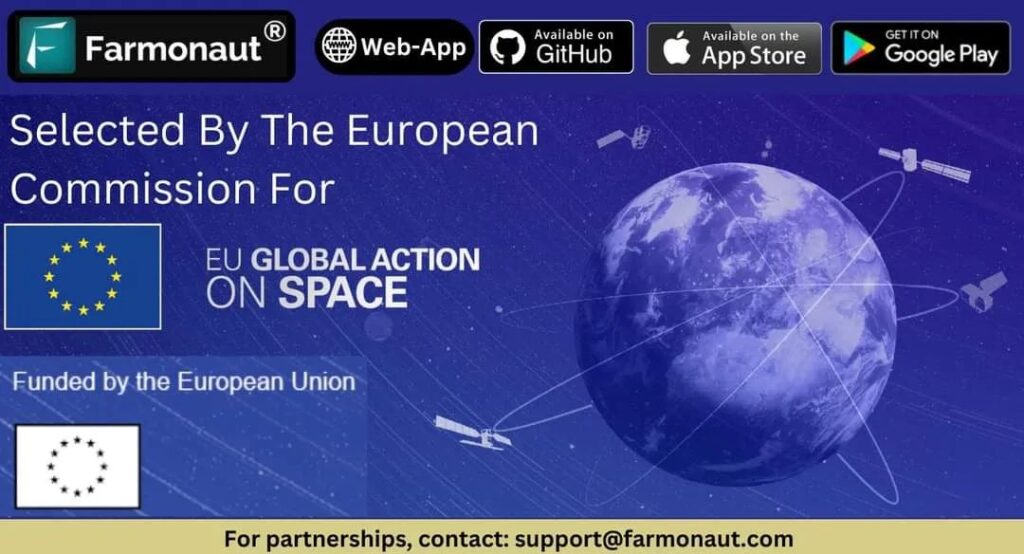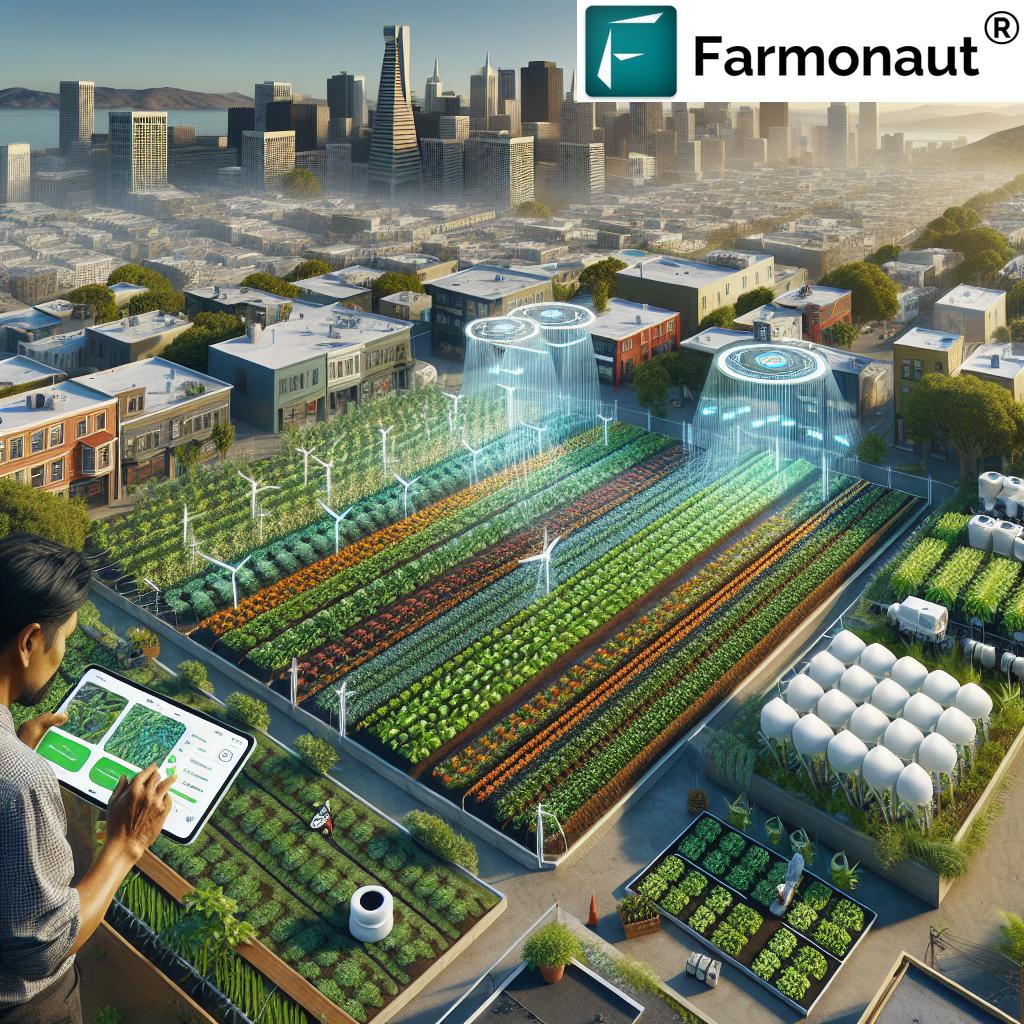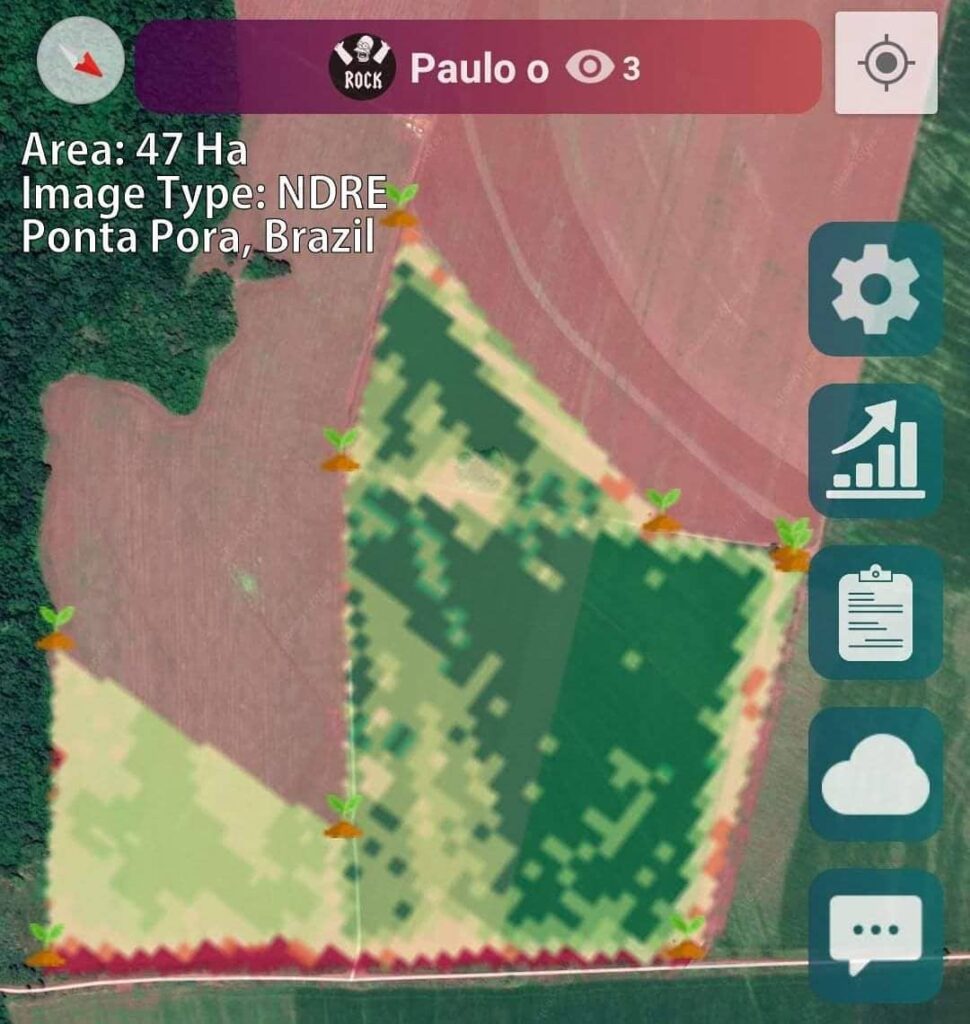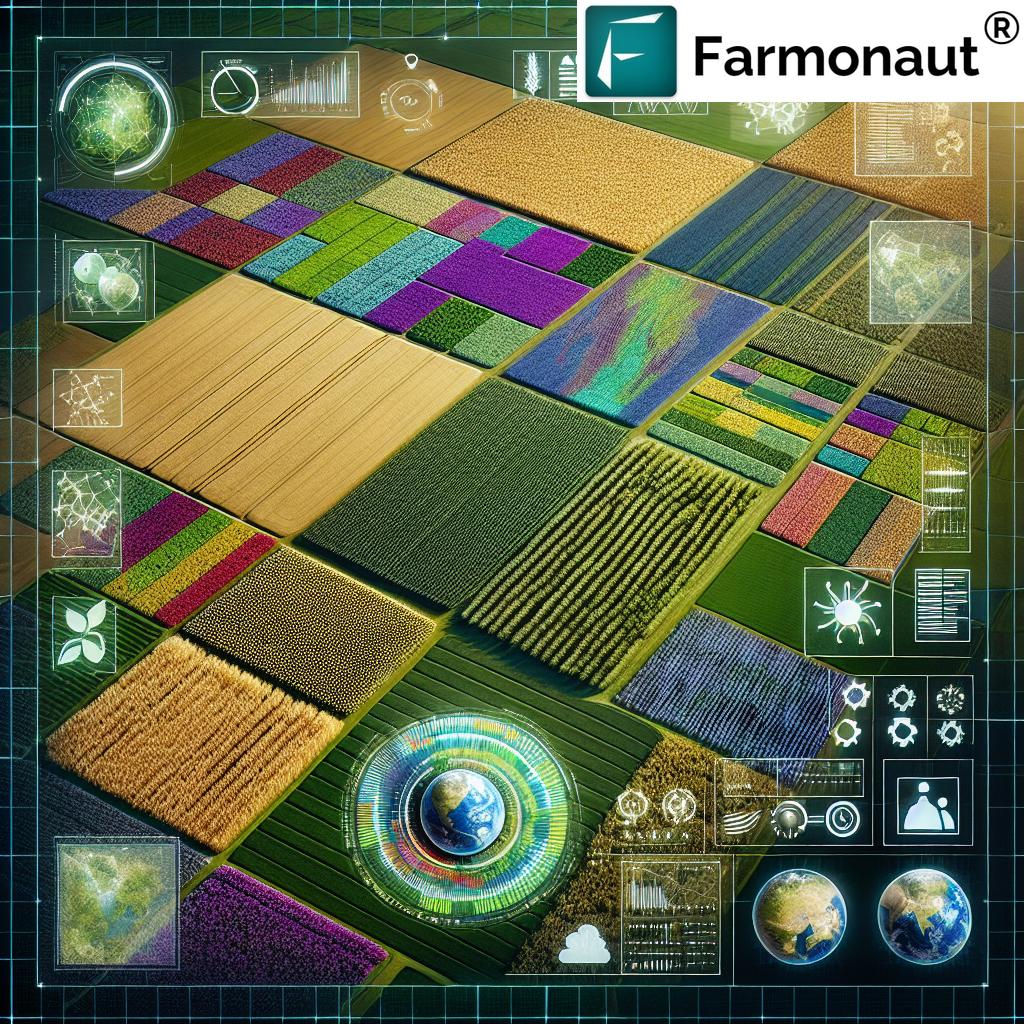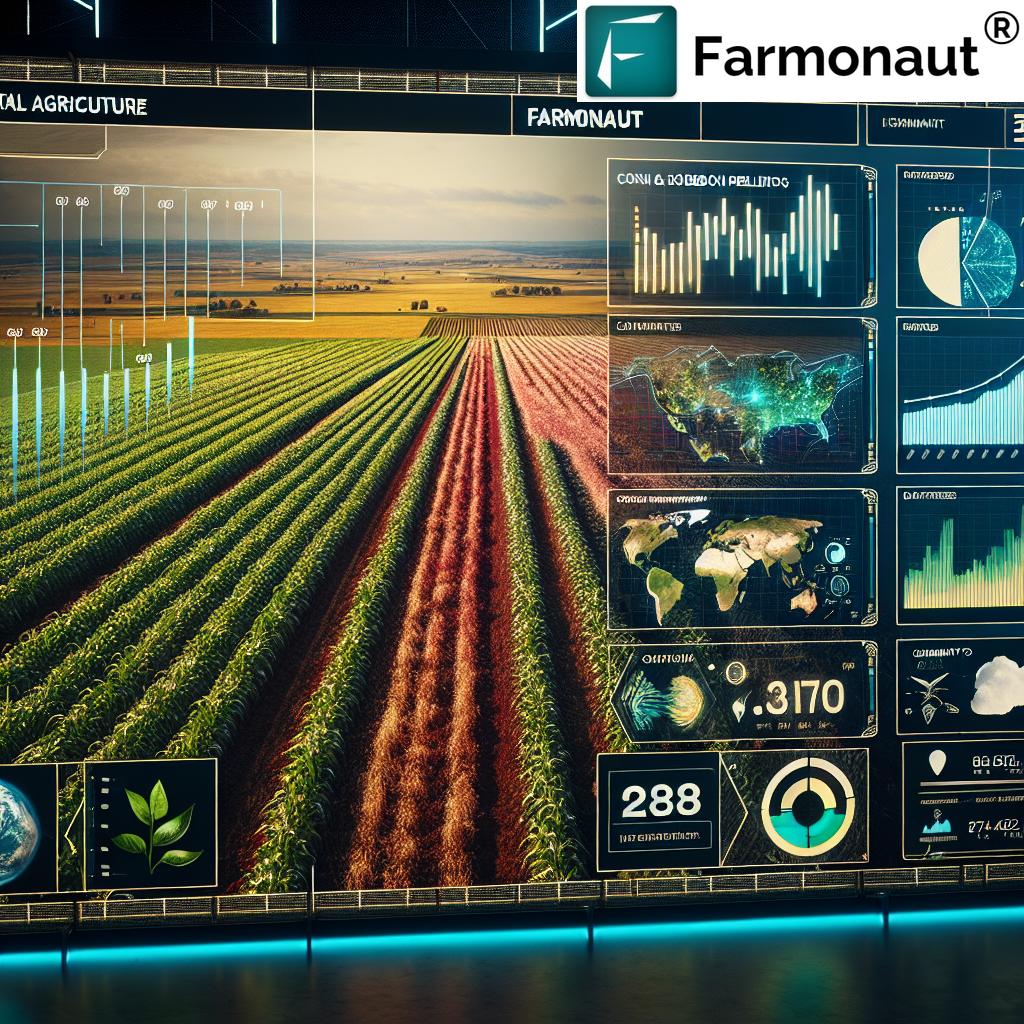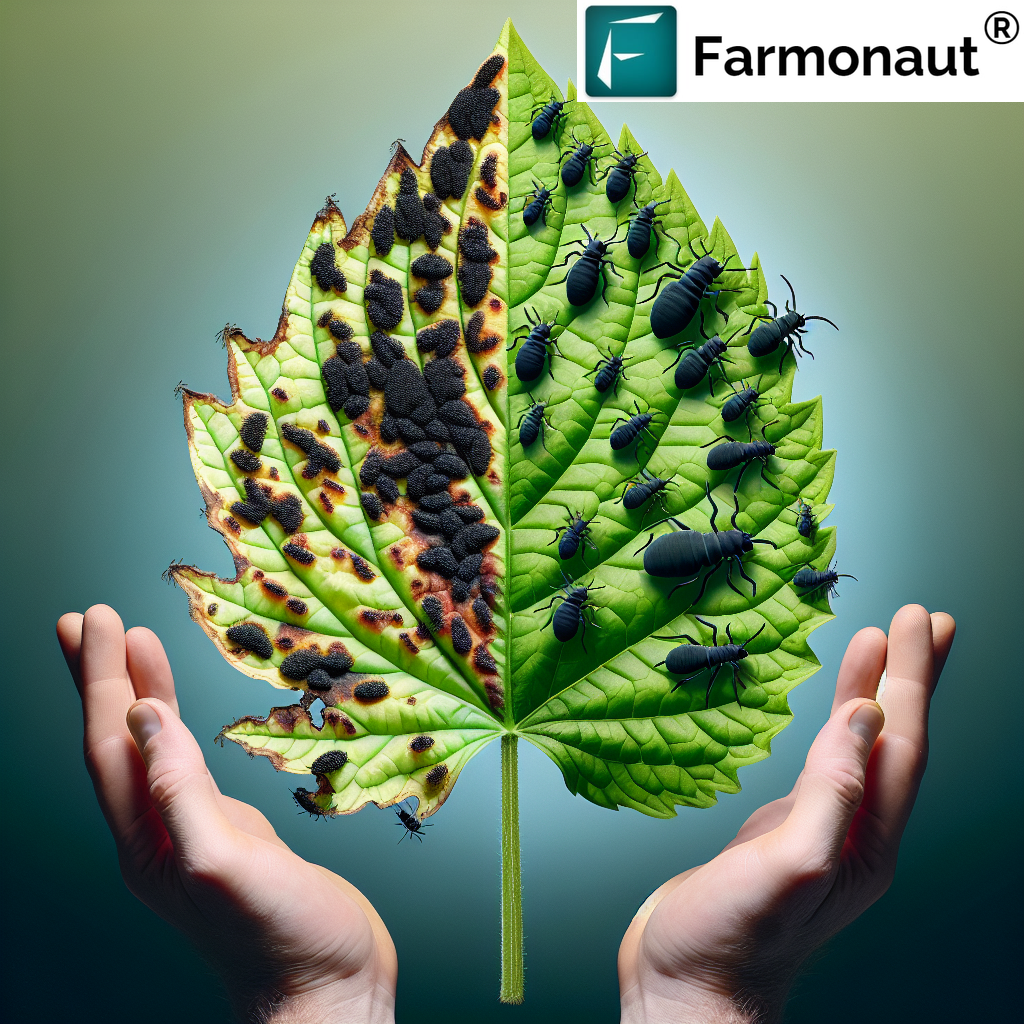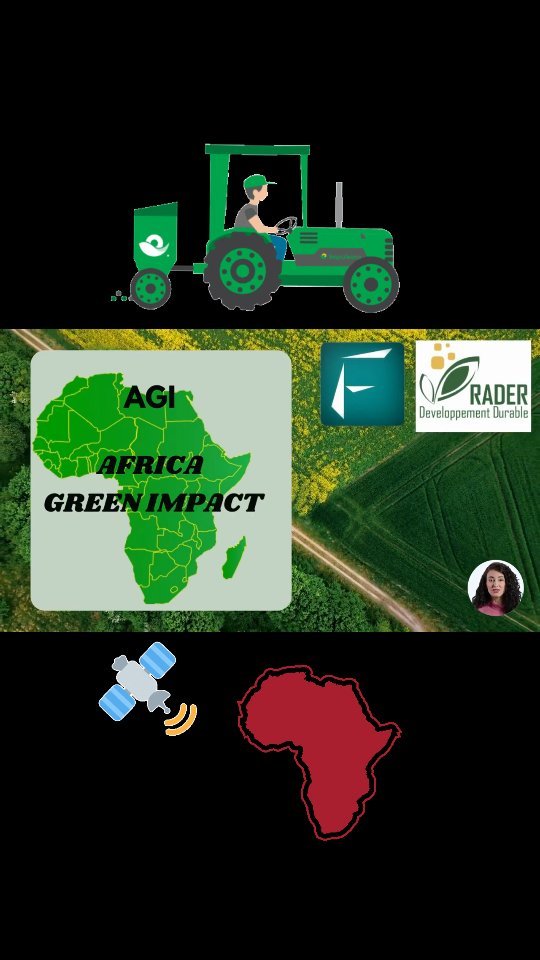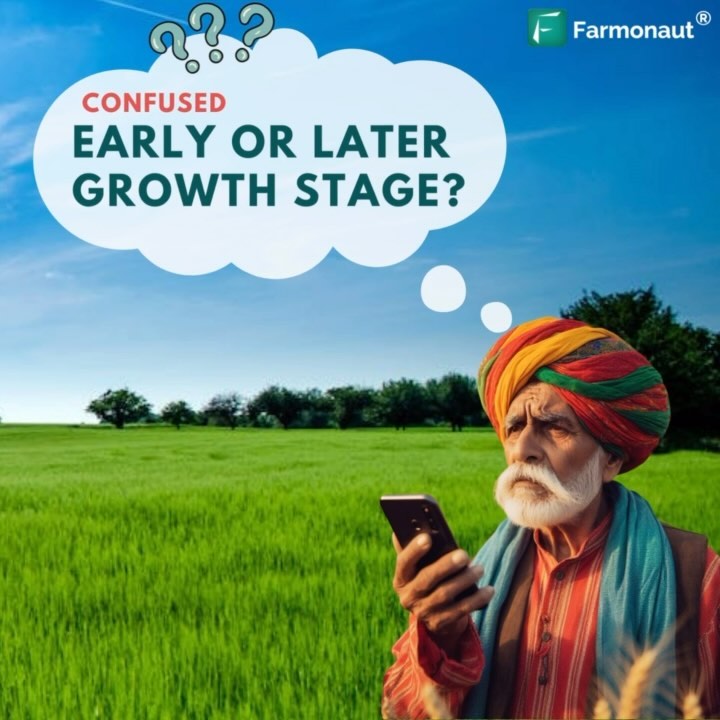
Revolutionizing Agriculture: Farmonaut’s Advanced Vegetation Indices System for Crop Health Monitoring
In the ever-evolving world of agriculture, staying ahead of the curve is crucial for farmers and agribusinesses alike. At Farmonaut, we’re proud to be at the forefront of this agricultural revolution, offering cutting-edge technology that transforms the way we monitor and manage crop health. Our advanced Vegetation Indices System is changing the game, providing farmers with unprecedented insights into their fields and empowering them to make data-driven decisions that boost productivity and sustainability.
The Power of Vegetation Indices in Agriculture
Vegetation indices are powerful tools that help us quantify and visualize various aspects of crop health and vigor. By analyzing the reflectance of different wavelengths of light from plants, we can gain valuable insights into crop conditions, stress levels, and overall health. At Farmonaut, we utilize a range of sophisticated vegetation indices to provide a comprehensive picture of your fields:
- NDVI (Normalized Difference Vegetation Index): This widely-used index helps assess overall vegetation health and biomass.
- NDRE (Normalized Difference Red Edge): This is used for crop health but for denser canopy.
- EVI (Enhanced Vegetation Index): Provides improved sensitivity in high biomass regions.
- VARI (Visible Atmospherically Resistant Index): Helps in detecting vegetation fraction and is less sensitive to atmospheric effects.
- SAVI (Soil Adjusted Vegetation Index): Minimizes soil brightness influences in areas with sparse vegetation.
- RVI (Radar Vegetation Index): It is used when there is a cloud cover for crop health.
- RSM (Radar Soil Moisture): It is used when there is a cloud cover for soil moisture
Farmonaut’s Advanced Vegetation Indices System: A Closer Look
What sets Farmonaut apart is not just our use of these indices, but how we’ve integrated them into a sophisticated, user-friendly system that takes crop health monitoring to the next level. Here’s what makes our approach unique:
1. Automatic Detection of Cloud Cover and Plant Size
One of the biggest challenges in satellite-based crop monitoring is dealing with cloud cover and varying plant sizes. Our system automatically detects and accounts for these factors, ensuring that you receive accurate, reliable data regardless of weather conditions or crop growth stage.
When it comes to
cloud cover, our advanced algorithms can differentiate between clouds and the ground, filtering out cloud-obscured areas to provide clear, usable data. This means you’re not left guessing or working with incomplete information when clouds pass over your fields.
As for plant size recognition, our system adapts its analysis based on the growth stage of your crops. Whether you’re dealing with newly emerged seedlings or fully mature plants, Farmonaut’s technology adjusts its calculations to provide the most relevant and accurate insights.
2. Comprehensive Crop Analysis
By utilizing multiple
vegetation indices, we offer a holistic view of your crop health. Each index provides unique insights:
- NDVI
- NDRE.
- EVI
- VARI
- SAVI
- RVI
- RSM
By combining these indices, we create a comprehensive picture of your field’s health, allowing for nuanced understanding and targeted interventions.
3. Real-Time Monitoring and Early Stress Detection
Our system doesn’t just provide static snapshots – it offers
real-time farm tracking capabilities. This means you can monitor your fields’ conditions as they change, allowing for quick responses to emerging issues.
One of the most valuable aspects of this real-time monitoring is early stress detection. By analyzing subtle changes in vegetation indices, our system can identify areas of crop stress before they become visible to the human eye. This early warning system allows farmers to take proactive measures, potentially saving crops and improving overall yield.
Why Choose Farmonaut for Crop Health Monitoring?
In the competitive world of agricultural technology, Farmonaut stands out for several reasons:
- Accuracy and Reliability: Our automatic detection of cloud cover and plant size ensures that you’re always working with the most accurate data possible.
- Comprehensive Analysis: By utilizing multiple vegetation indices, we provide a more complete picture of crop health than systems relying on a single index.
- Real-Time Insights: Our real-time monitoring capabilities allow for timely interventions and dynamic farm management.
- User-Friendly Interface: We’ve designed our system to be intuitive and easy to use, making advanced agricultural technology accessible to farmers of all technical backgrounds.
- Cost-Effective: Compared to traditional methods of crop monitoring, our satellite-based system offers a more affordable solution without compromising on quality.
- Scalability: Whether you’re managing a small family farm or overseeing large-scale agricultural operations, our system can scale to meet your needs.
Farmonaut vs. Drone and IoT-Based Farm Monitoring
While drones and IoT devices have their place in modern agriculture, Farmonaut’s satellite-based system offers distinct advantages:
| Feature |
Farmonaut Satellite System |
Drone-Based Monitoring |
IoT-Based Monitoring |
| Coverage Area |
Large scale (entire farms at once) |
Limited by flight time and regulations |
Limited by number of sensors deployed |
| Frequency of Data Collection |
Regular intervals (as frequent as daily) |
Dependent on manual flights |
Continuous but localized |
| Initial Investment |
Low (subscription-based) |
High (equipment costs) |
Moderate to High (sensor costs) |
| Operational Complexity |
Low (automated system) |
High (requires trained operator) |
Moderate (requires setup and maintenance) |
| Weather Dependency |
Low (can see through some cloud cover) |
High (cannot fly in bad weather) |
Low (but may be damaged in extreme conditions) |
| Data Analysis |
Advanced (multiple indices, AI-powered) |
Varies (depends on equipped sensors) |
Specific (based on sensor type) |
Applications of Farmonaut’s Technology
Farmonaut’s advanced Vegetation Indices System has proven its effectiveness across various agricultural applications, providing farmers with actionable insights to enhance productivity, optimize resource use, and promote sustainability. Below are some key applications:
1. Precision Irrigation Management
Farmonaut’s technology enables farmers to monitor soil moisture and crop health through satellite imagery and indices like NDVI and NDWI. By analyzing water stress levels in real-time, farmers can make informed irrigation decisions, ensuring optimal water usage and preventing over-irrigation or drought stress
2. Early Disease Detection
Early-stage crop disease detection is critical to minimizing damage and loss. Farmonaut’s system helps detect abnormal changes in vegetation, enabling farmers to identify signs of disease or pest infestations before they become widespread, allowing for timely interventions
3. Nitrogen Management
Farmonaut helps farmers optimize nitrogen application by assessing nitrogen levels across their fields. The system provides insights through indices like NDRE, assisting in precise fertilization decisions, reducing costs, and minimizing environmental impact due to excessive nitrogen use.
4. Yield Prediction and harvest Planning
By tracking crop growth and health throughout the season, Farmonaut’s platform helps farmers forecast yields more accurately. This allows for better harvest planning, reducing the risk of crop loss and improving the timing of harvesting activities.
5. Sustainable Farming Practices
Farmonaut supports sustainable agriculture by encouraging practices like reduced fertilizer use and efficient water management. The insights gained from satellite data promote conservation of resources and contribute to long-term soil health and environmental sustainability.
The Future of Crop Health Monitoring with Farmonaut
As we look to the future, we at Farmonaut are committed to continually improving and expanding our crop health monitoring capabilities. Some exciting developments on the horizon include:
- Integration with Climate Data: We’re working on integrating more detailed climate data into our system, allowing for even more accurate predictions and recommendations.
- Machine Learning Advancements: Our team is developing more sophisticated machine learning algorithms to improve our predictive capabilities and provide even more personalized recommendations.
- Enhanced Mobile Capabilities: We’re expanding our mobile app features to allow for real-time field updates and alerts, putting the power of our technology literally in the palm of your hand.
- Blockchain Integration: We’re exploring ways to integrate blockchain technology for improved traceability and transparency in the agricultural supply chain.
These advancements will further cement Farmonaut’s position as a leader in agricultural technology, providing farmers with the tools they need to meet the challenges of 21st-century agriculture.
Getting Started with Farmonaut
Ready to transform your approach to crop health monitoring? Getting started with Farmonaut is easy:
- Visit our website at https://farmonaut.com/app_redirect to create an account.
- Download our mobile app from the Google Play Store or the Apple App Store.
- Input your field boundaries and start receiving insights within days.
For developers interested in integrating our technology into their own systems, check out our API documentation at
https://farmonaut.com/farmonaut-satellite-weather-api-developer-docs/.
Conclusion: Empowering Farmers with Advanced Technology
At Farmonaut, we believe that the future of agriculture lies in the intelligent application of technology. Our advanced Vegetation Indices System is more than just a
crop health sensor – it’s a comprehensive tool that empowers farmers to make informed decisions, optimize their resources, and increase their yields sustainably.
By providing accurate, real-time data on crop health, identifying stress areas early, and offering actionable insights, we’re helping farmers around the world meet the challenges of modern agriculture. Whether you’re managing a small family farm or overseeing large-scale agricultural operations, Farmonaut’s technology can help you take your farming practices to the next level.
Join us in revolutionizing agriculture. With Farmonaut, the future of farming is here today.
Subscribe to Farmonaut
Ready to transform your farming practices with cutting-edge satellite technology? Subscribe to Farmonaut today and unlock the full potential of your farm:
Frequently Asked Questions (FAQ)
- Q: How often does Farmonaut update its satellite imagery?
A: Our system provides updates as frequently as daily, depending on satellite availability and weather conditions. Most users receive updates every 3-5 days.
- Q: Can Farmonaut’s system work for all types of crops?
A: Yes, our system is designed to work with a wide variety of crops, from grains and legumes to fruits and vegetables. The vegetation indices we use are applicable across different crop types.
- Q: How accurate is Farmonaut’s crop health monitoring?
A: Our system boasts high accuracy, with most indices having an accuracy rate of over 90% when compared to ground-truth data. However, accuracy can vary depending on factors such as weather conditions and crop type.
- Q: Do I need any special equipment to use Farmonaut?
A: No special equipment is needed. All you need is a smartphone or computer with internet access to view your field data and insights.
- Q: How does Farmonaut handle data privacy and security?
A: We take data privacy and security very seriously. All data is encrypted and stored securely, and we never share individual farm data without explicit permission.
- Q: Can Farmonaut integrate with other farm management software?
A: Yes, we offer API access that allows for integration with many popular farm management systems. For more information, please check our API documentation.
- Q: What support does Farmonaut offer if I have questions or issues?
A: We provide customer support via email and phone. Our team of agricultural experts is also available for consultation on interpreting data and implementing recommendations.
Have more questions? Don’t hesitate to reach out to our support team. We’re here to help you make the most of Farmonaut’s advanced crop monitoring technology.





